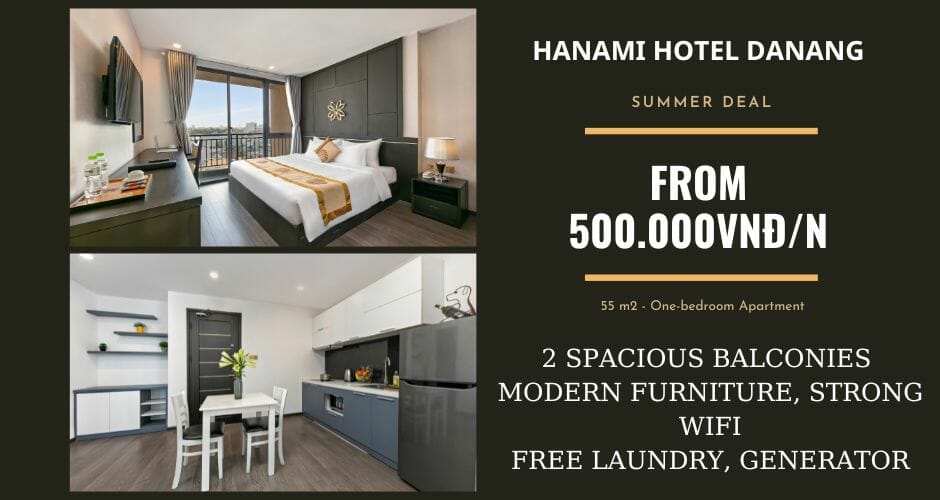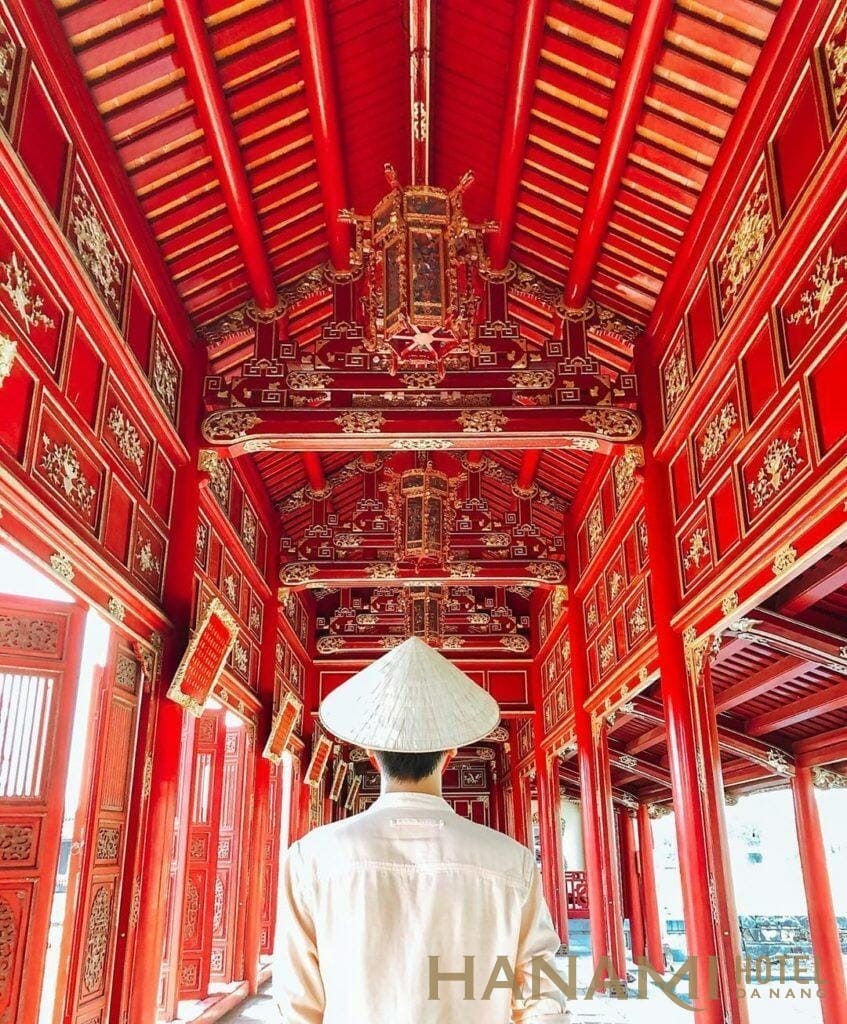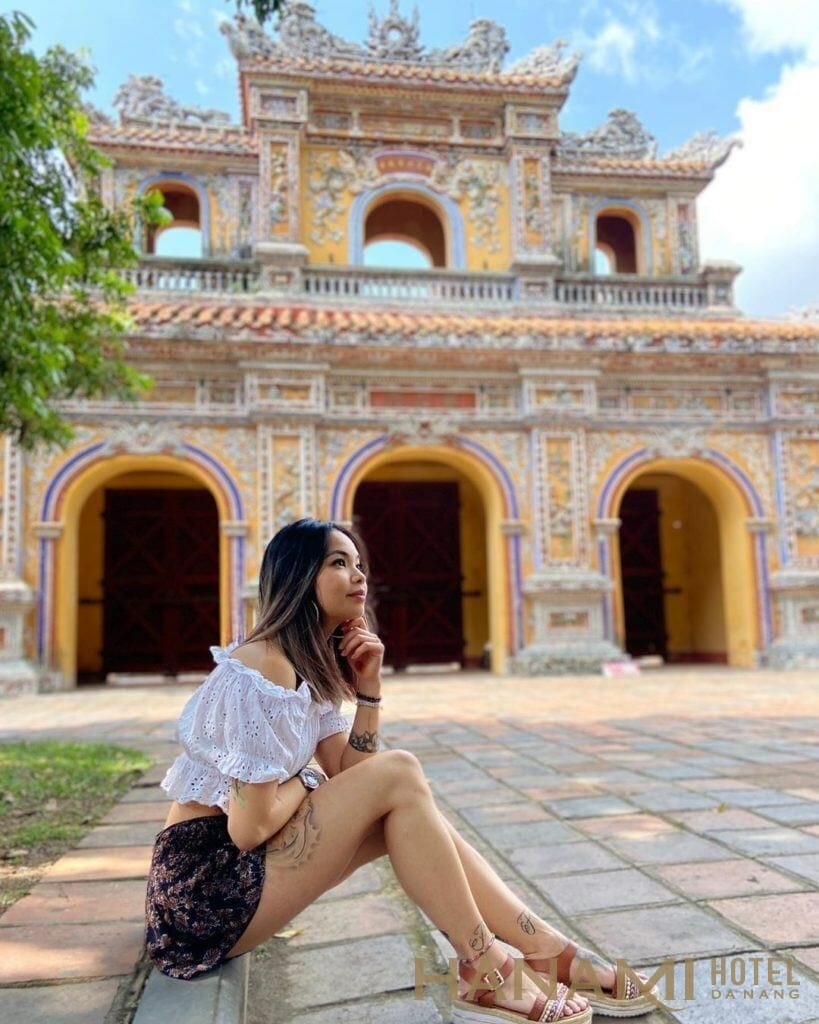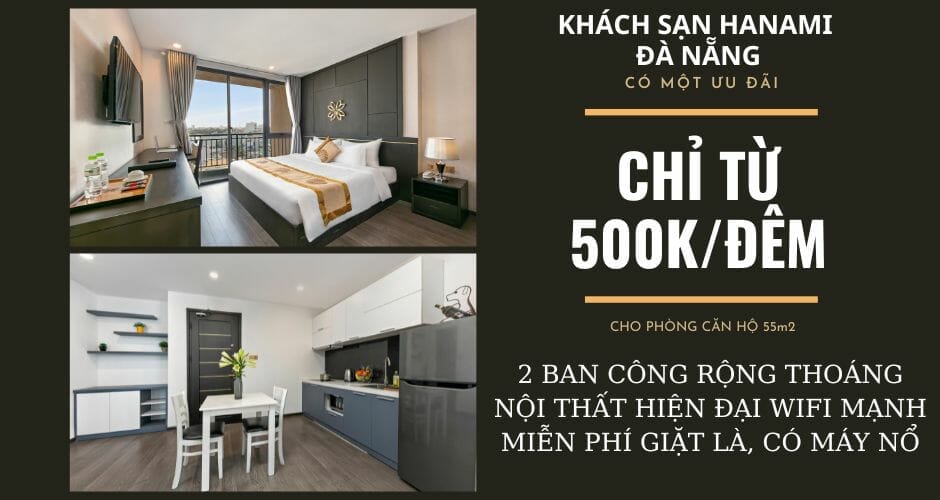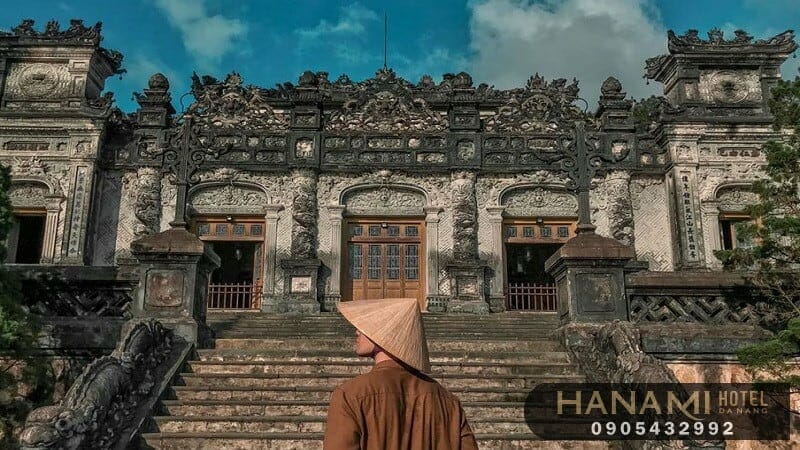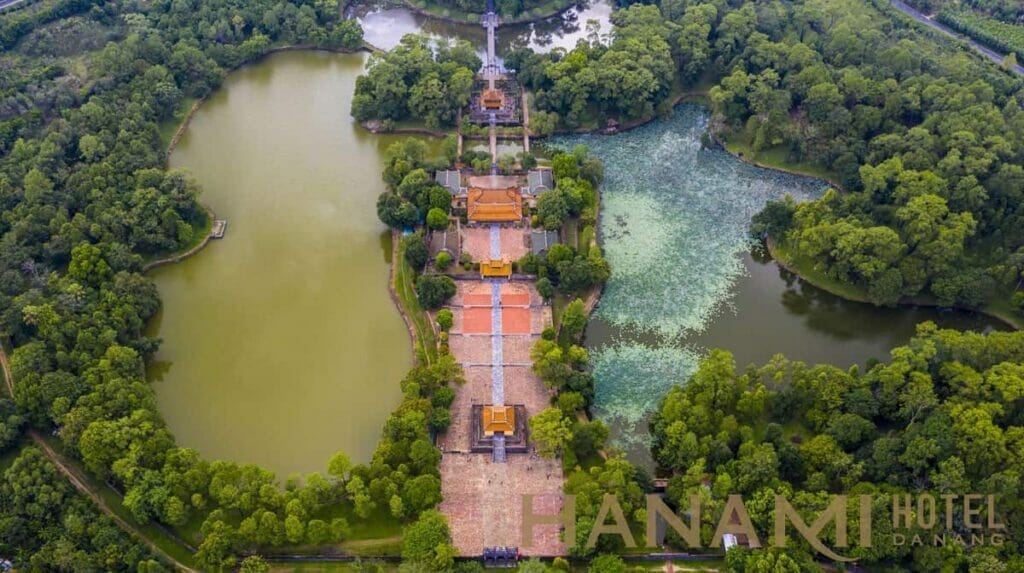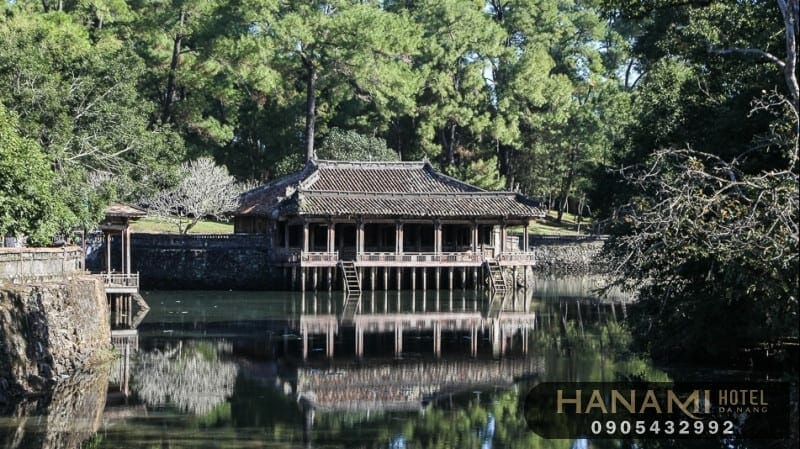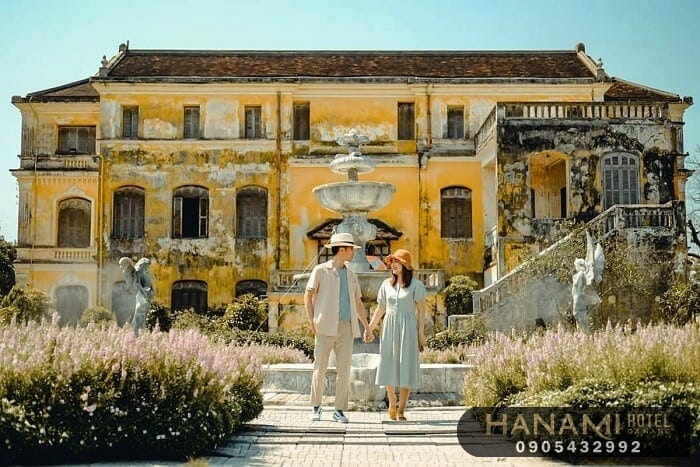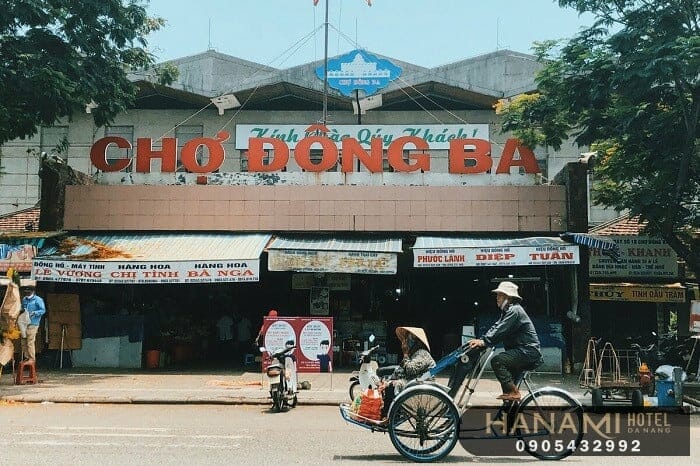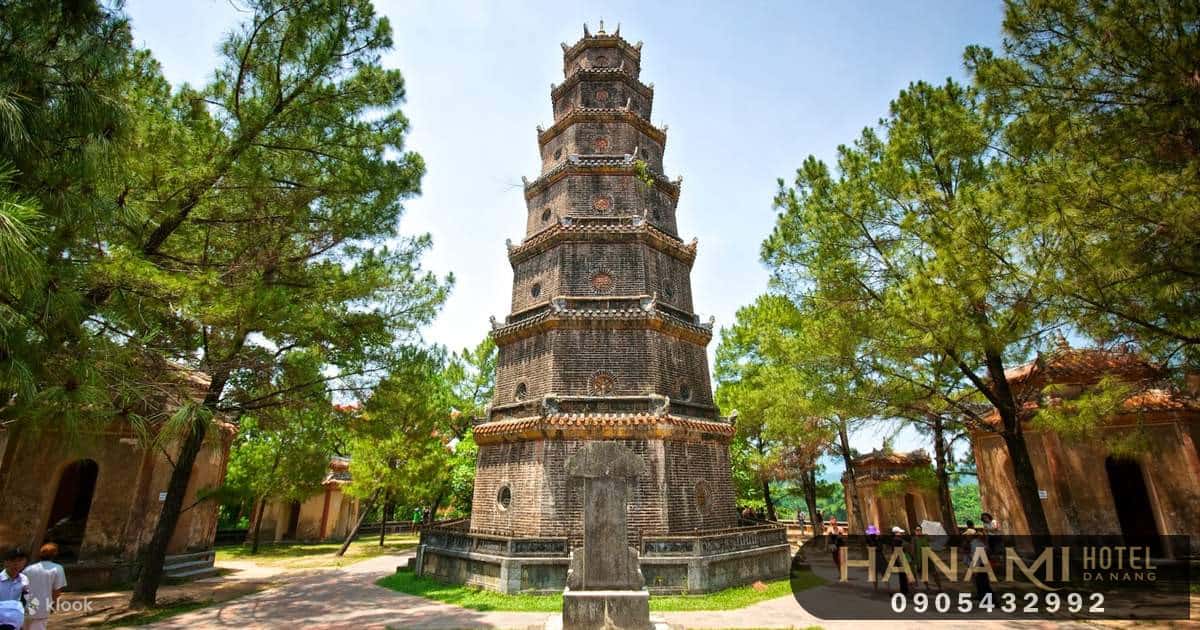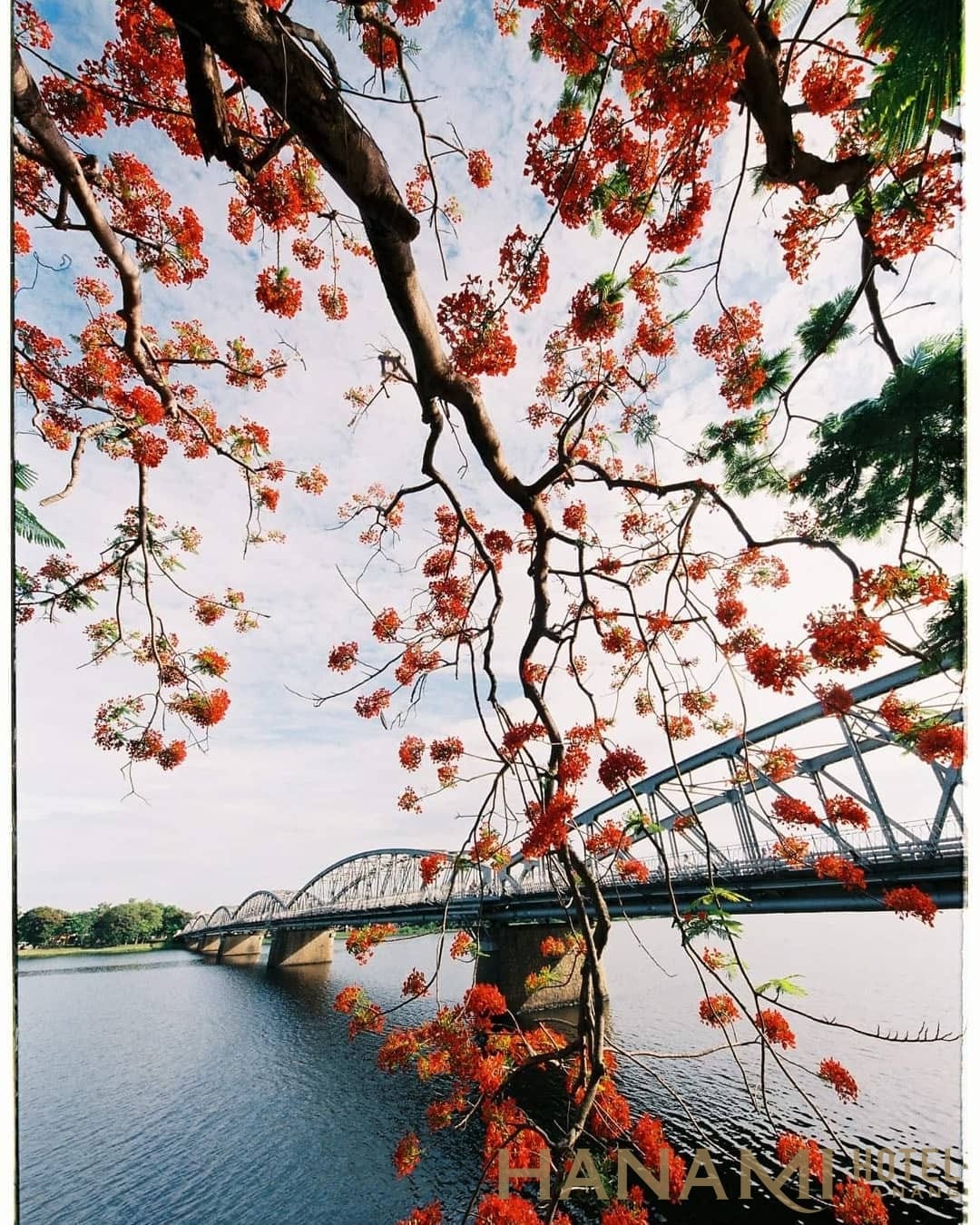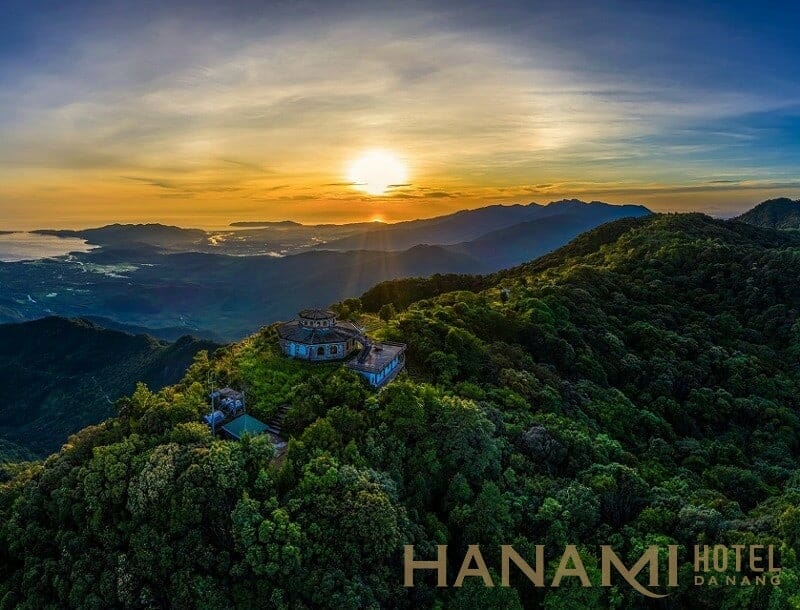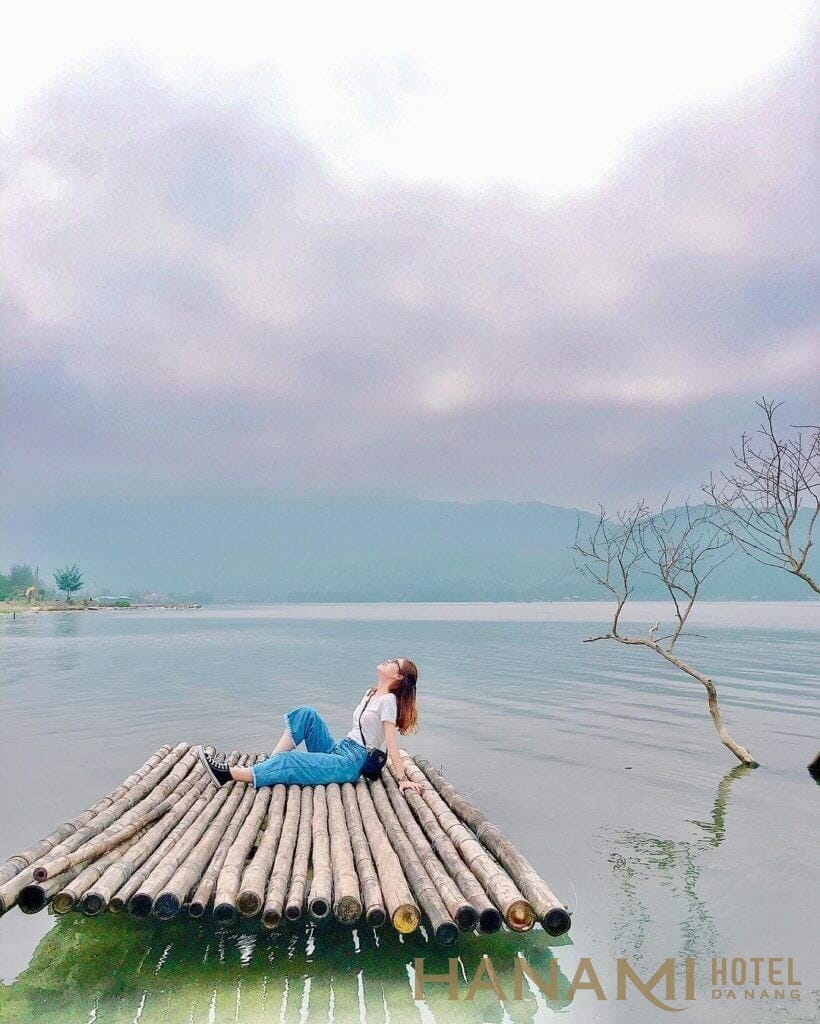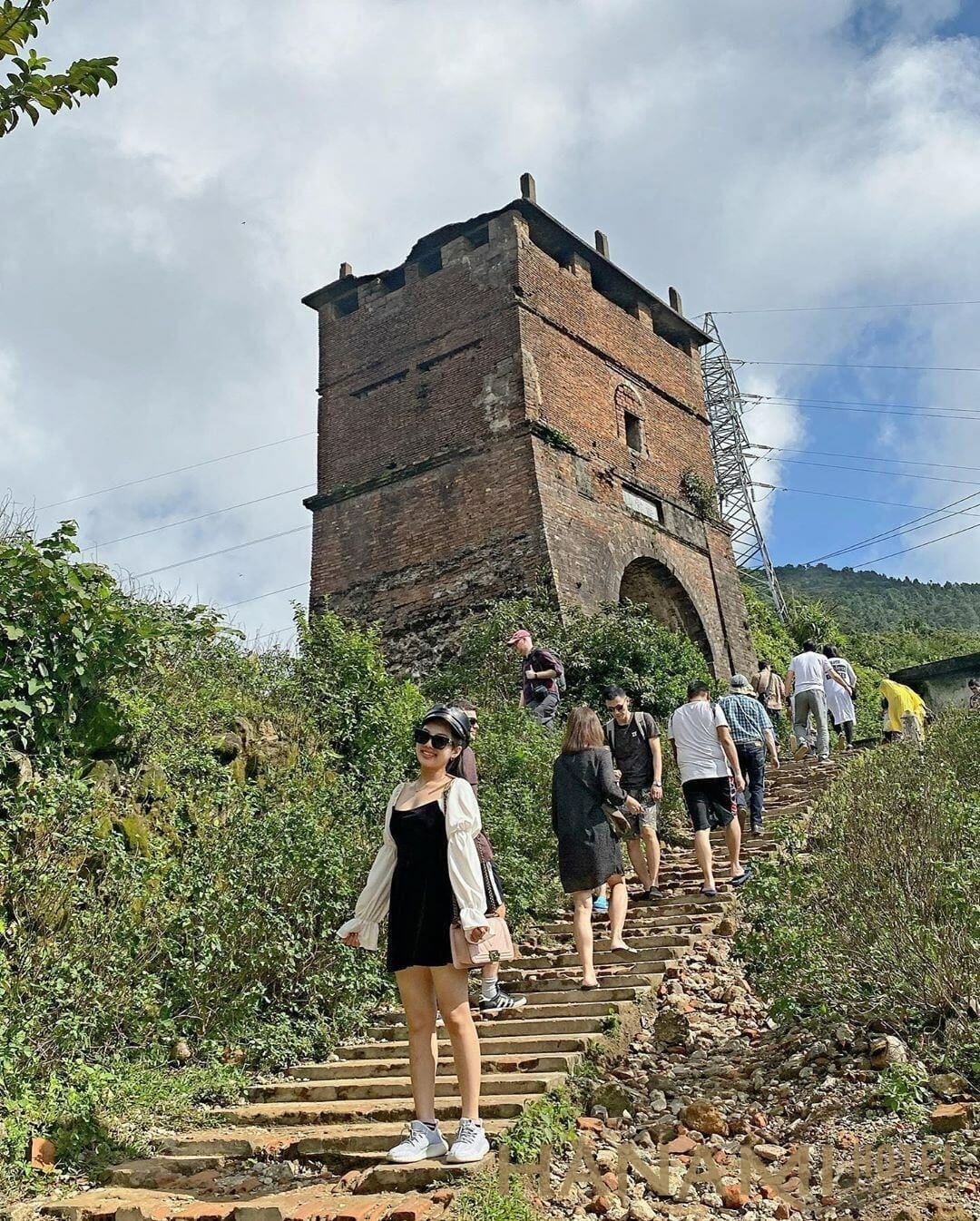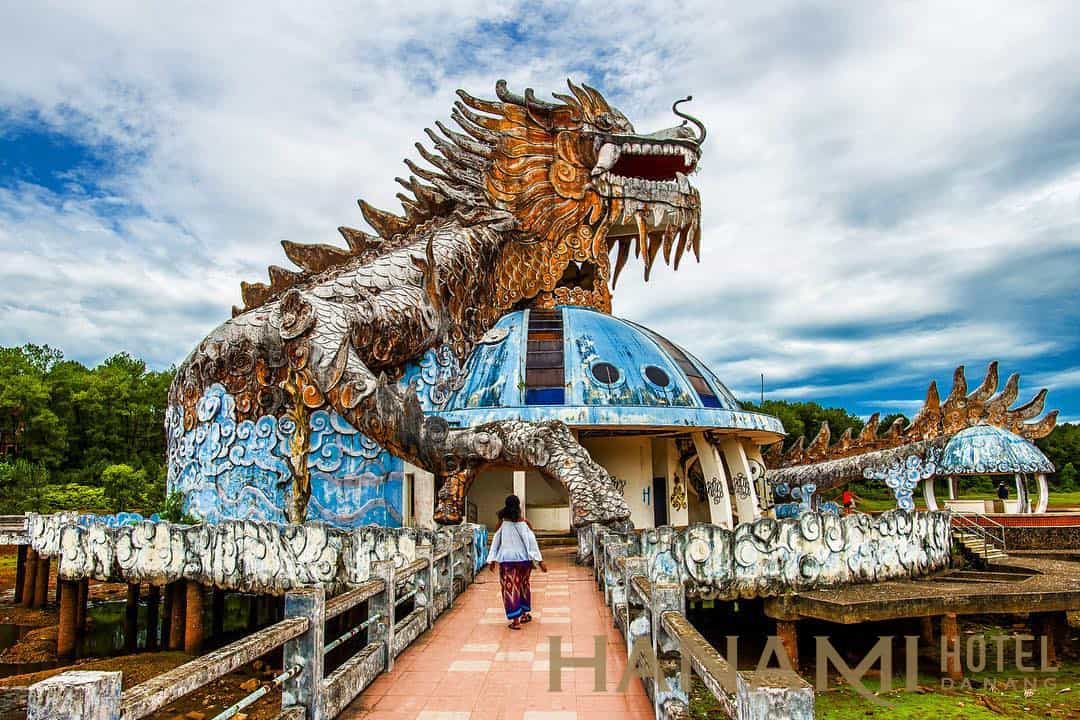Da Nang is known as a livable city with people who are warm and welcoming. After only a short time, the city has grown enormously, with a strong tourism industry attracting a large number of people each year. Famous bridges include the Dragon Bridge, Han River Swing Bridge, Thuan Phuoc Bridge, Tran Thi Ly Bridge, and others, as well as tourist attractions such as Ba Na Hill and Ngu Hanh Son. All of which are regarded as famous tourist destinations. The dreamy Hue is a neighbor that is only one Hai Van Pass away from Da Nang City. If you want to go from Da Nang to Hue but don’t know where to go or what to do, Hanami Hotel Danang will give you some useful information in the below article.
Hue – The Land of Poems
Those who have not been to Hue may not know that Hue is famous for its poetic Huong River, conical hats, poems, and the land known as the sacred land. Besides, Hue is also famous for the typical cuisine of the past, which is often used by people in their daily meals. Hue dishes are very diverse, prepared, and presented very elaborately and beautifully. Not only that but the Ancient Capital is also known for its mausoleums and relic complexes, recognized by UNESCO as World Cultural Heritage, including tangible and intangible cultural heritage. Hanami Hotel will help you suggest places to go when traveling to Hue.
Top 20 tourist attractions in Hue you should travel
Hue Citadel (The Imperial City of Hue)
Ticket price: 200,000 VND/person
Hue Citadel was built under the reigns of King Gia Long and Minh Mang. According to Vietnamese feng shui geography as well as the theory of the Five Elements, Yin and Yang, and Translation. In the past, architects planned to lay out the citadel facing the south. Choosing the mountain area as a screen, together with Da Vien and Con Hen, create the position “Leftt is Thanh Long, Right is Bach Ho”. Nine cannons are displayed on both sides of the entrance. Talk about the meaning of Light, Wood, Water, Fire, and Earth. Praying for favorable weather and harmony for the ancient capital.
Hue Citadel has more than 100 outstanding architectural works such as Ngo Mon Gate, Thai Hoa Palace, Dien Tho Palace, Truong Sanh Palace, Hung Mieu, The Mieu, and so on.
Because the campus of Hue Citadel is very large as well as the hot summer weather, you should come early in the morning as soon as it opens at 7 am and bring a hat and hat to avoid the sun. You need at least 3 hours to visit the ruins. Tickets to the Citadel cost 200,000 VND per person. When visiting attractions in Hue, visitors can rent a Nhat Binh shirt, or ao dai to take pictures to transform into a queen, concubine, or princess.
Khai Dinh Tomb (Ứng Tomb)
Ticket price: 150,000 VND/person
Ung Tomb is another name for Khai Dinh Tomb. As the name suggests, it is the tomb of the 12th king of the Nguyen Dynasty (King Khai Dinh). Located outside Hue citadel and on Chau Ngu mountain.
Located on the slopes of Chau Chu mountain in Thuy Bang commune, Huong Thuy town, is the resting place of King Khai Dinh (1885-1925). This place was built according to the traditional architecture of the Nguyen Dynasty. Khai Dinh Tomb is the work with the smallest area but takes the most effort and money of the Nguyen Dynasty mausoleums. The architecture of the mausoleum has the interference of East and West cultures, reflecting the lavish taste of the king during his lifetime.
To get to the main hall of Khai Dinh Tomb, you have to climb successively high stairs. When you arrive, you will be surprised when standing from the height of the main hall and looking down, you will see how majestic the mountains are.
Minh Mang Tomb (Hiếu Tomb)
Ticket price: 150,000 VND/person
Hieu Tomb is another name for Minh Mang Tomb, which is located on Cam Khe Mountain near the Bang Lang intersection. The place where two lines of the left and right meet. They create the Perfume River and are around 12 kilometers from the castle.
Minh Mang Mausoleum was built between 1840 and 1843, it mobilized up to ten thousand workers and soldiers to finish this tomb. A gorgeous mausoleum was created from a lonely mountainous area by the hands of human labor and inventiveness. When you come to visit, you will be shocked to see such majestic, big, and poetic architecture in the heart of the untamed mountains. Take images quickly to capture precious memories in front of the charming scenery while visiting Minh Mang Tomb.
Tu Duc Tomb (Khiêm Tomb)
Ticket price: 150,000 VND/person
Tomb of Tu Duc with the same architecture as the Minh Mang Tomb. Besides, Tu Duc Tomb is a complex of architectural works, including Tu Duc’s burial place, located in a narrow valley in Thuong Ba village, Thuy Xuan ward, Hue City. The tomb was initially called Van Nien Co, but after the Chay Voi rebellion, Tu Duc renamed it Khiem Cung.
After Tu Duc’s death, the mausoleum was renamed Khiem Tomb until now. Tu Duc Tomb has sophisticated architecture and a charming landscape and is one of the most beautiful mausoleums of the Nguyen royal family. Stepping into this place, you will feel a quiet space; the scent of trees, mountains, and forests blends into the quiet space, making you feel relaxed. If you go right in the lotus blooming season, it is a beautiful scene: the lotus flowers bloom on the lake surface with the fish swimming and diving, wearing purple Ao Dai, and holding a poem hats. The picture will be as beautiful as a painted painting.
An Dinh Palace
Compared to the “summer palace” of the Hue court, the An Dinh palace has the appearance of a magnificent ancient European castle but has traditional Hue royal motifs. Recognized by UNESCO as a World Cultural Heritage Site, An Dinh Palace is considered a unique artistic architectural work, representing the neoclassical school of architecture in Vietnam in the early 20th century. Taking yellow as the dominant tone for the overall architecture, An Dinh Palace has similarities compared to many other buildings in Hue.
The main gate of An Dinh Palace has two floors, built in the shape of three gates. The floor is decorated with porcelain tiles, so it is very elaborate. Going in, we will see the Trung Lap communal house. This building has an octagonal structure, with the foundation raised above the ground. The highlight of Trung Lap communal house is the bronze statue of King Khai Dinh, which has perfect proportions compared to real people.The outstanding features of An Dinh Palace are located on the Khai Tuong floor. This name was given by King Khai Dinh himself, meaning auspicious beginning.” This work has European castle architecture, has an area of up to 745 m2, and has all 3 floors.
The entire front of the building is decorated with meticulous and elaborate pattern details. An Dinh Palace has an architectural style according to modern Roman motifs mixed with traditional patterns such as square, wide, etc., which combine to create an extremely unique architectural work, both bringing modern features of Europe and expressing the soul of Eastern culture.
Nam Giao Altar
Nam Giao altar, located in Truong An ward, Hue City, is the only surviving altar among many ancient sacrifices in Hue. In the past, this was the place where the Nguyen kings held the ceremony to sacrifice heaven and earth in the spring.Nam Giao Altar is built on a rectangular campus; four sides of the campus have doors in four directions: east, west, south, and north, of which the south door is the main door. In front of each door, a screen is built, and surrounding the altar area is a wall of basalt stone. The altar consists of three floors of bricks built on top of each other, nearly 4.7 meters high.
Vong Canh Hill
In the Hue travel guide “guide”, if you want to see the wonderful natural scenery of Hue, where should you go? Surely the answer will be Vong Canh Hill, located in Thuy Xuan Ward, southwest of Hue City. The foothill adjoins the bank of the Perfume River and is located on a road with many destinations, such as Thuy Xuan incense village, King Tu Duc’s mausoleum, Thieu Tri’s mausoleum, etc., so it has long been famous and a stopover for many tourists. guest.
The most suitable time to come to Vong Canh is at sunset, watching the Perfume River redden in the sun with the light dragon boats drifting and the mountains and hills in the distance.
Hue’s Garden House (An Hien Garden House)
An Hien garden house located at 58 Nguyen Phuc Nguyen Street, Hue City, is the most typical garden house with unique architecture and a beautiful landscape. In the middle of the garden is a house with three compartments and two wings with exemplary design, carving, and interior decoration.
Hue’s garden house is a beautiful image, considered the architectural quintessence of Hue. It has a history of over 200 years, is a unique ancient landscape garden, and is a harmonious combination of house and garden architecture and surrounding trees. These were originally the palaces of feudal mandarins in the past.
Thien Mu Pagoda
Along Kim Long Road, you will come upon Thien Mu Pagoda, a sacred temple that is over 400 years old. This old pagoda is located in Hue’s west, atop Ha Khe hill, on the left bank of the Perfume River. The pagoda was built in 1601 under the reign of King Nguyen Hoang, while riding a horse along the banks of the Perfume River, he happened to see a vacant lot with a great location, located on the romantic Huong River.
Considering this is the land that was often handed down by the ancients that every night an old woman in a red robe with a kind face often appeared here and said that this land would have a god established a temple, accumulating spiritual energy and making the South country strong. Since then, the pagoda has been regularly restored since then to become what it is now.
Thien Mu Pagoda was constructed in the style of Hue’s historic capital. Going deep within, the following structures will appear in front of your eyes: Tam Quan Gate, Phuoc Duyen Tower, and Dai Hung Palace. The temple is also associated with many thrilling stories and rumors. However, do not be too worried when you have traveled to Hue without coming here to pray and save beautiful moments.
Dong Ba Market
Built-in 1899, Dong Ba market is one of the symbols of the ancient capital, which is bustling with buyers and sellers all year round. The market extends from Gia Hoi Bridge to Truong Tien Bridge, with thousands of stalls. Entering the market, you will see the colorful atmosphere of a Hue market. Tourists come here to freely find delicious food or to walk around the shops of clothes, fabrics, hats, fish sauces, and fruit cakes that are only available in Hue to buy and take home.
Dong Ba Market is an extremely busy and bustling Hue tourist destination, located between Truong Tien Bridge and Gia Hoi Bridge. It is also the largest market in Hue, with a lot of stalls and a variety of goods for sale.
Dong Ba Market consists of a 3-floor building called the bell tower. The first floor is the area of stalls selling dried seafood and Hue specialty fish sauce; the second floor sells handicrafts and souvenirs; and the third floor is the fabric and clothing stalls.
The market is open from 7 a.m. to late afternoon, so visitors can visit whenever they like. However, after 4 p.m., there are more snack shops open, and you can bargain when buying.
Phu Cam Church
Located at 1 Doan Huu Trung Street, the unique architecture is a “virtual living” spot as beautiful as Europe. Experiencing ups and downs in history, this Phu Cam church is said to be the most beautiful in Hue and has been rebuilt 10 times since 1682.
The church is located on Phuoc Qua Hill, and the main hall and two bell towers rise to the sky, very majestic. Inside the church is a spacious and airy cathedral that can accommodate up to 3,000 people at the same time. Because Phu Cam Church is a religious site, you need to dress politely and keep quiet when visiting and taking photos.
Hue High School for the Gifted (Hue National School)
This is the first high school in Hue built during the reign of King Thanh Thai in 1896. The site is located at 12 Le Loi Street, right in the center. The school stands out with its brilliant red paint and green trees all year. The Hue Quoc Hoc campus is very large, so you can walk freely through the corridors, classrooms, and school grounds, visit the old French architecture, and take souvenir photos.
You visit the school at noon, like 11.30 pm, or after 17 p.m. to visit and take photos when students are absent. The school has many large trees that are very cool. If you go early in the morning, you can be protected from entering because it is during the students’ class time. Parking fees at the school are 5,000 VND.
Truong Tien Bridge
Across the Perfume River, the Truong Tien Bridge is an image that everyone remembers when referring to Hue. During the day, the bridge is only thoughtfully silhouetted against the Perfume River; in the late afternoon and evening, the bridge is adorned with very prominent, sparkling colored lights. In the evening, visitors to Truong Tien Bridge should combine a walk along the banks of the Perfume River. In the afternoon or evening, there will be more snack shops to attract guests.
Huong River
The Perfume River meanders between the mountains and forests, passing through villages from Kim Long and Vi Da to Dong Ba, Gia Hoi, and Nam Pho, blending with the scent of Hue flowers. Have the opportunity to take a cruise on the river by boat to see the romantic Huong Giang.
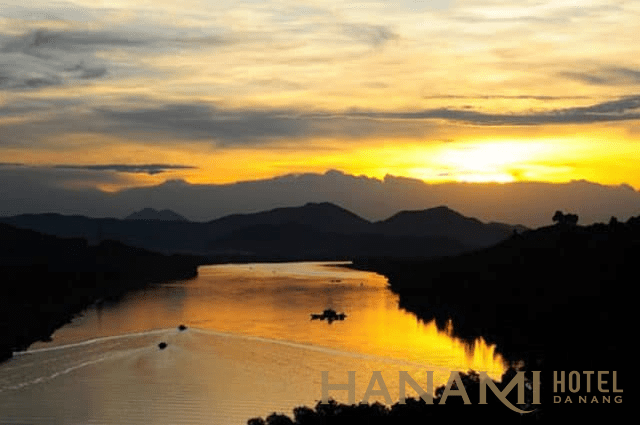
If you want to see the city shimmering with lights from the Perfume River, you can board a dragon boat and enjoy the “specialty” of Hue. Ca Hue refers to the interference and cultural absorption between royal court music and folk singing. A standard Hue choir usually has only one person singing along with a set of five instruments. The more colorful the musical accompaniment, the more it enhances the vocals. The ticket price for the show, which involves listening to Hue songs for about 1 hour on the Perfume River, ranges from 100,000 to 150,000 VND per person.
Thuy Xuan Village
On the way to visit Vong Canh Hill and Tu Duc Mausoleum, visitors will pass through Thuy Xuan Incense Village, about 7 km from Hue city center. This place impresses visitors with its brilliant bouquets of incense-like colorful flowers.
In addition to taking artistic pictures, visitors can chat with incense makers to better understand Hue and this traditional culture. The sightseeing area is concentrated on both sides of Huyen Tran Cong Chua Street.
Ru Cha Mangroves Forest
The primary mangrove forest belongs to Tam Giang Lagoon, Thuan Hoa village, Huong Phong commune, and Huong Tra town. “Ru” means forest, and “cha” means a tree in mangrove areas. If you come here in the fall, you can also admire the bright yellow color of the flowers blooming throughout the forest.
Ru Cha is a primeval mangrove forest that is being restored and developed over an area of nearly 5 hectares in Huong Phong commune, Huong Tra town. From Thuan An Port, you can visit this place by boat or fishing boat.
Young people who come to Ru Cha Forest are very interested in taking pictures of the deep concrete road and two rows of trees. From the city center, if you follow Highway 49, you will see a signboard to turn left in the direction of Tam Giang Bridge. Go about 4 km more. There is no fee to visit Ru Cha Forest.
Bach Ma National Park
Bach Ma is about 40 km from the center; you can travel by car or by tour, including local guides, specialized terrain vehicles, and overnight hotels. The terrain in the national park is hilly and steep, so it is difficult to go there. Be physically prepared if you want to trek to the top of Bach Ma, 1,450 m high.
Bach Ma National Park is an ideal place where many tourists stop to watch the sunset. In the evening, you rest at an old French villa in the national park. On this journey, visitors can combine stargazing at night in Bach Ma with
Early the next morning, you continue to walk along the Do Quyen trail to Ngu Ho to admire the five most beautiful lakes in Bach Ma forest, immerse yourself in the cool stream, and admire the majestic mountains. The journey continues to the precious medicinal garden. Do Quyen waterfall has a height of more than 300 m and is one of the wonders of Bach Ma.
Lap An Lagoon
Lap An Lagoon, also known as An Cu Lagoon, is about 800 hectares wide and located near National Highway 1A, connecting Da Nang to Hue. Located at the foot of Phu Gia Pass, the lagoon is surrounded by the Bach Ma mountain range, and on one side is Lang Co Bay.
The period from April to July is the time when Lap An Lagoon gives the most beautiful scenery because the sun shines a lot and the rain is less. Watching the sunshine on the water creates a beautiful scene.
Hai Van Gate
Hai Van Quan was built in 1826, is a military fortress guarding the top of Hai Van Pass, has a very favorable location, and is known as the “most part” of the Hue capital. Hai Van Quan is like the southern gate of the land of Thuan Hoa, Phu Xuan, and Hue. Hai Van Quan is located at the top of a pass that crosses a mountain range that crashes into the sea from the Truong Son range. The top of Hai Van Pass is 496m above sea level, 77.3km south of Hue and 28.7km north of Da Nang.
Thuy Tien Lake
This is one of the most famous abandoned water parks in the world. Many backpackers come to Vietnam to make it a unique check-in point.
This park used to cost 70 billion VND to build and opened in 2004, but it did not attract many visitors, so it stopped operating a few years later.
Today, Thuy Tien Lake is covered with multicolored graffiti murals and overgrown trees. However, many tourists love to explore and tell each other that Thuy Tien Lake has an unbelievable attraction and is a destination not to be missed when visiting Hue.
Hue still has many famous food stalls and restaurants that Hanami will introduce to you in the next posts. If you still do not know which hotel to book to be able to visit Hoi An, Hue, and Da Nang, please refer to Hanami Hotel Danang. Hanami was voted as the Top 10 hotels worth staying in Da Nang. Do not hesitate to quickly book a room at Hanami Hotel right away!
Về tác giả:
Chúng tôi không kiếm lợi nhuận từ nội dung đăng tải. Các bài viết đều được biên soạn và kiểm duyệt bởi đội ngũ tác giả và biên tập viên của công ty TNHH du lịch khách sạn Hana. Xem thêm: về tác giả

